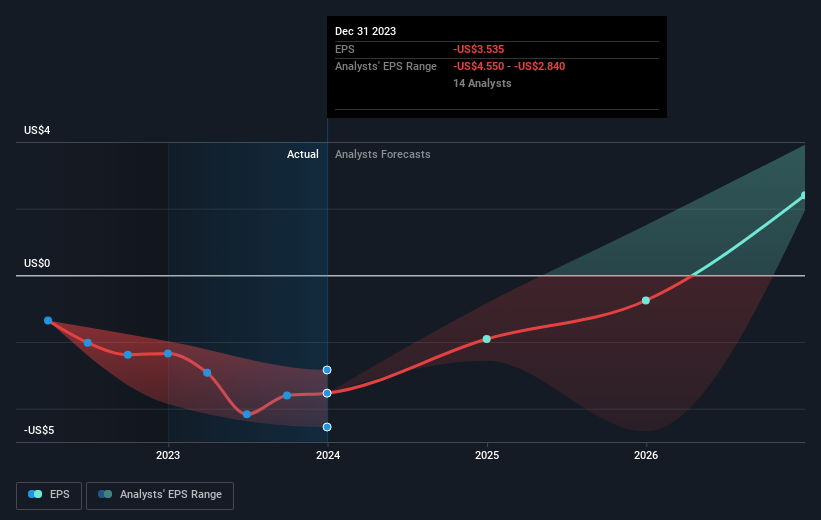HubSpot, Inc.'s (NYSE:HUBS) Profit Outlook
With the business potentially at an important milestone, we thought we'd take a closer look at HubSpot, Inc.'s (NYSE:HUBS) future prospects. HubSpot, Inc., together with its subsidiaries, provides a cloud-based customer relationship management (CRM) platform for businesses in the Americas, Europe, and the Asia Pacific. The US$34b market-cap company announced a latest loss of US$176m on 31 December 2023 for its most recent financial year result. As path to profitability is the topic on HubSpot's investors mind, we've decided to gauge market sentiment. In this article, we will touch on the expectations for the company's growth and when analysts expect it to become profitable.
View our latest analysis for HubSpot
HubSpot is bordering on breakeven, according to the 31 American Software analysts. They expect the company to post a final loss in 2025, before turning a profit of US$90m in 2026. Therefore, the company is expected to breakeven roughly 2 years from now. In order to meet this breakeven date, we calculated the rate at which the company must grow year-on-year. It turns out an average annual growth rate of 49% is expected, which is rather optimistic! Should the business grow at a slower rate, it will become profitable at a later date than expected.
Underlying developments driving HubSpot's growth isn’t the focus of this broad overview, however, bear in mind that typically a high forecast growth rate is not unusual for a company that is currently undergoing an investment period.
One thing we’d like to point out is that The company has managed its capital judiciously, with debt making up 35% of equity. This means that it has predominantly funded its operations from equity capital, and its low debt obligation reduces the risk around investing in the loss-making company.
Next Steps:
There are too many aspects of HubSpot to cover in one brief article, but the key fundamentals for the company can all be found in one place – HubSpot's company page on Simply Wall St. We've also put together a list of relevant factors you should look at:
Valuation: What is HubSpot worth today? Has the future growth potential already been factored into the price? The intrinsic value infographic in our free research report helps visualize whether HubSpot is currently mispriced by the market.
Management Team: An experienced management team on the helm increases our confidence in the business – take a look at who sits on HubSpot’s board and the CEO’s background.
Other High-Performing Stocks: Are there other stocks that provide better prospects with proven track records? Explore our free list of these great stocks here.
Have feedback on this article? Concerned about the content? Get in touch with us directly. Alternatively, email editorial-team (at) simplywallst.com.
This article by Simply Wall St is general in nature. We provide commentary based on historical data and analyst forecasts only using an unbiased methodology and our articles are not intended to be financial advice. It does not constitute a recommendation to buy or sell any stock, and does not take account of your objectives, or your financial situation. We aim to bring you long-term focused analysis driven by fundamental data. Note that our analysis may not factor in the latest price-sensitive company announcements or qualitative material. Simply Wall St has no position in any stocks mentioned.

 Yahoo Finance
Yahoo Finance 
